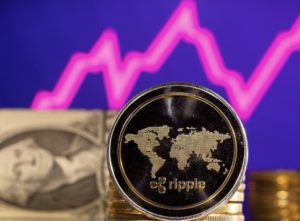Revolutionizing Portfolio Management Through Asset Tokenization

Jakarta, Pintu News – The tokenization of real assets on the blockchain opens up new opportunities in investment portfolio management. By utilizing this technology, investors can access transparent and up-to-date market data, which was previously only available for a small number of assets.
The Origins of Modern Portfolio Theory
Modern portfolio theory did not emerge by chance. In the early 1970s, amidst heated debates about market efficiency, Burton Malkiel advocated index fund investing in his book “A Random Walk Down Wall Street” published in 1973. This idea was later realized by John Bogle with the launch of the Vanguard S&P 500 fund in 1975.
This approach changed the way investors viewed the stock market. By adopting index-based strategies, investors began to understand the importance of diversification and risk management in their investment portfolios.
Also Read: Cardano (ADA) Price Prediction by Alex Becker: Upside Potential or Excessive Speculation?
Tokenization: Expanding the Universe of Investable Assets

Tokenization not only provides a scalable way to package different types of assets. It also paves the way for transparent and comparable data on asset values. By representing real assets such as real estate in Thailand, oil leases in Nigeria, or taxi medallions in New York as digital tokens on the blockchain, it is possible to generate market-derived data on a daily basis.
This data is invaluable as it provides deeper insights into the true value of assets. Investors can make more informed decisions by accessing accurate and up-to-date data, ultimately increasing their profit potential.
Impact on Global Finance
Currently, alternative strategies – considered by pension fund managers as investments other than stock or bond indices – account for only 15-20% of most funds. However, with changes in academic data on investment options, another 80% is open to exploration.
These changes could shake the foundations of global finance. With more investable assets and more transparent data, financial markets can become more inclusive and dynamic.
Measurable but Inevitable Change
The change in portfolio management through asset tokenization will not happen overnight. The quickest estimate to see this change emerge is around a decade, assuming the time it takes to build a tokenized portfolio of assets and 5-7 years to build a track record of daily information.
Once the data is available, changes can happen quickly, especially with the extensive use of artificial intelligence. This technology can accelerate analysis and decision-making, bringing new efficiencies into portfolio management.
Conclusion
Asset tokenization opens a new era in portfolio management, providing access to more extensive and transparent data. It is not just about diversification, but also about leveraging technology to make smarter, data-driven investment decisions.
Also Read: Bitcoin (BTC) Trend Not Over? CryptoQuant CEO Analyzes!
That’s the latest information about crypto news today. Get more information about crypto academy from beginner to expert level only at Pintu Academy and enrich your knowledge about the world of crypto and blockchain.
Follow us on Google News to get the latest information about crypto and blockchain technology. Enjoy an easy and secure crypto trading experience by downloading Pintu Crypto via Google Play Store or App Store now.
Experience web trading with advanced trading tools such as pro charting, various order types, and portfolio tracker only at Pintu Pro. Click Register Pintu if you don’t have an account or click Login Pintu if you are already registered.
*Disclaimer
This content aims to enrich readers’ information. Pintu collects this information from various relevant sources and is not influenced by outside parties. Note that an asset’s past performance does not determine its projected future performance. Trading crypto carries high risk and volatility, always do your own research and use cold hard cash before investing. All activities of buying and selling Bitcoin and other crypto asset investments are the responsibility of the reader.
Reference
- Coindesk. How Tokenized Assets Could Redefine Portfolio Management. Accessed on February 28, 2025
- Featured Image: Generated by AI




